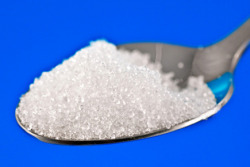I’m often asked about how to communicate with patients about the frequency of dental checkups. As we all know, dental care is not one-size-fits-all. It’s not “just a cleaning,” and some people just need to come in more often.
So I’d like to share an analogy that helps me get my point across to my patients:
Dental checkups are maintenance, just like getting an oil change for your car. Sure, you can get by putting off the oil change. But your engine’s not going to live very long, and it’s probably not going to perform well. That’s why people who understand cars recommend that you change your oil more often, depending on your car and the products you use.
In the dental industry, the standard of care is a prophylactic cleaning once every 6 months. However, scientific basis isn’t there. The six-month standard was set because of a Pepsodent ad in the 1940s. So while there’s really not a good scientific basis for visiting the dentist twice a year, that’s what people feel they should do.
The biggest trend in healthcare is personalized care, in which the genetic tendencies and risk factors are all taken into account to reduce the chance for various diseases. It’s now appearing that oral care will be one of the most important components of this personalized care. Why now? Because we can establish individuals’ genetic and microbial risks with regard to oral health.
Like I said, twice a year may not be enough. Sure, you’re probably going to keep some of the stains off your teeth. You might reduce the bleeding. But research shows us that 3-7 days after a dental prophy, biofilm starts to reappear. In 30 days, it’s pretty much the same as it was before the cleaning.
For most people, it takes longer than that to have bone destruction in their mouth—so in that regard, we’re safe. But we now know that oral biofilm incites the release of inflammatory cytokines, which has an impact on the whole body. So when it comes down to it, every three months is probably more appropriate for many people.
So—going back to my oil change analogy—when you look at that little sticker on your windshield and think, “I bet I can make it a few thousand more miles,” we all know you can probably get by with that. But you’re going to have problems down the road. Your engine will be dirtier, your car won’t run as efficiently, and because of this you’ll probably need some expensive repairs eventually to make it last as long as it should. That simple oil change would have been a lot easier and a lot less costly.
The mouth is kind of the same way. You can “get by” with a lot less than is optimal. And unfortunately in dentistry, the patients often think, “Let’s do the bare necessities” because they want to get the heck out of the place that they think will cause them pain. But every day we find new ways in which just “getting by” is not good enough to keep your body—your engine—running as well or as long as it should.
There are a lot of lifestyle changes a person can make to live a longer, healthier life. Good oral health is probably the easiest, quickest, and – in my opinion, most impactful.



